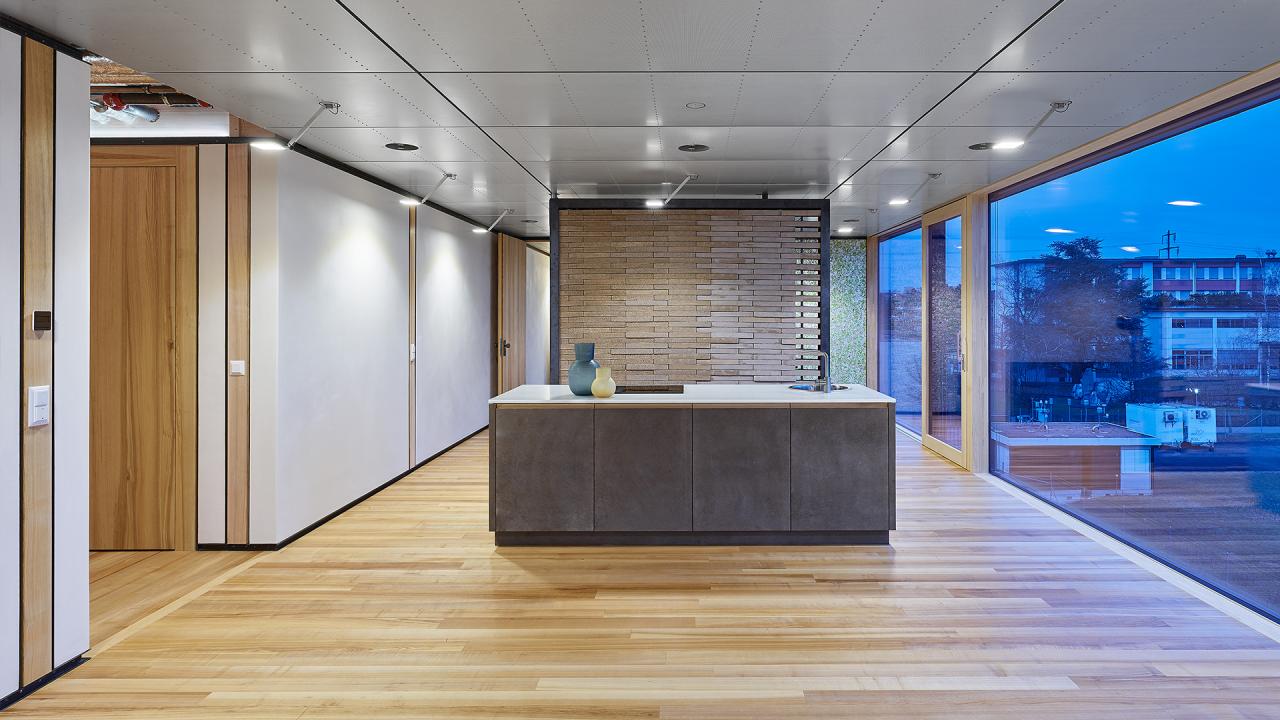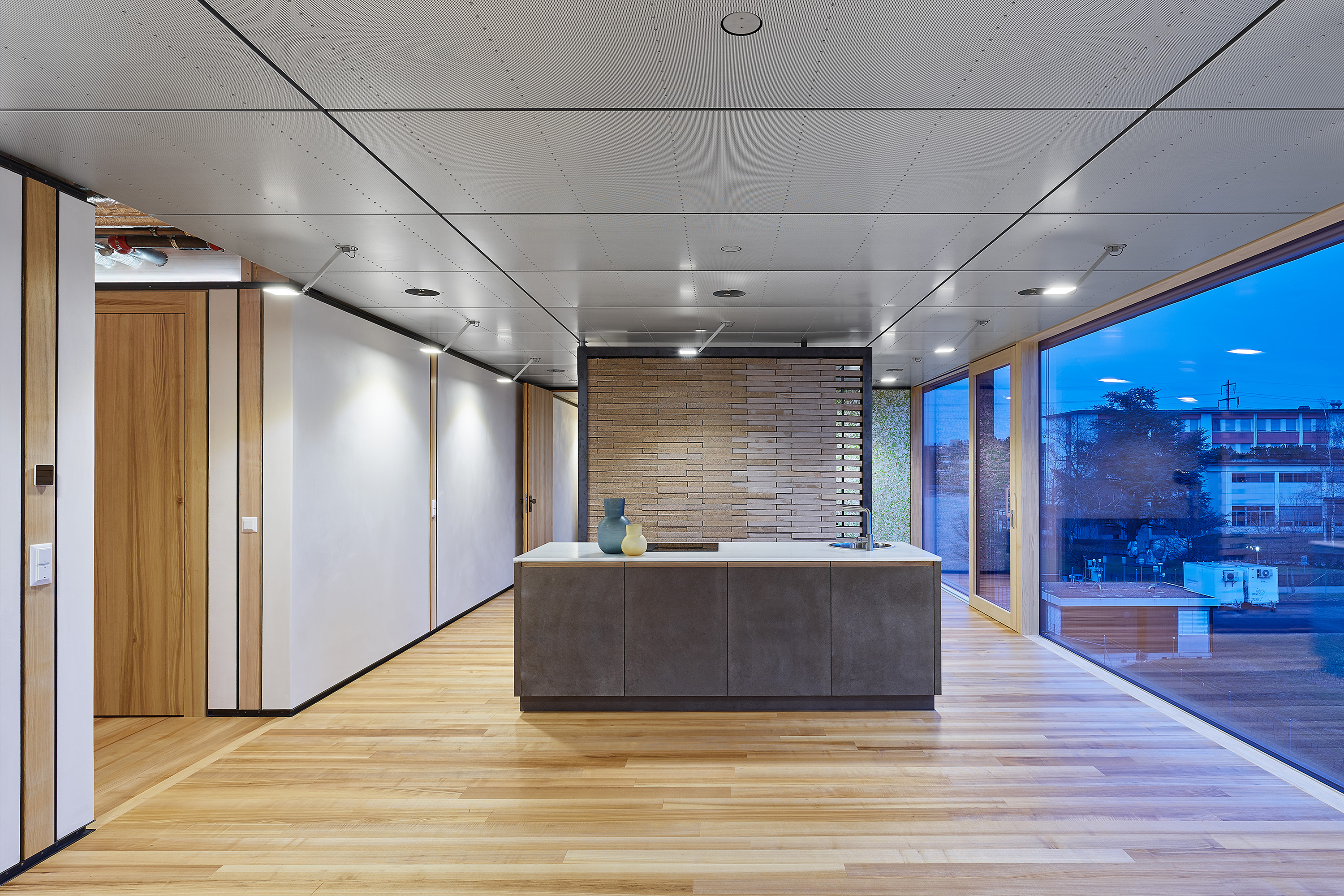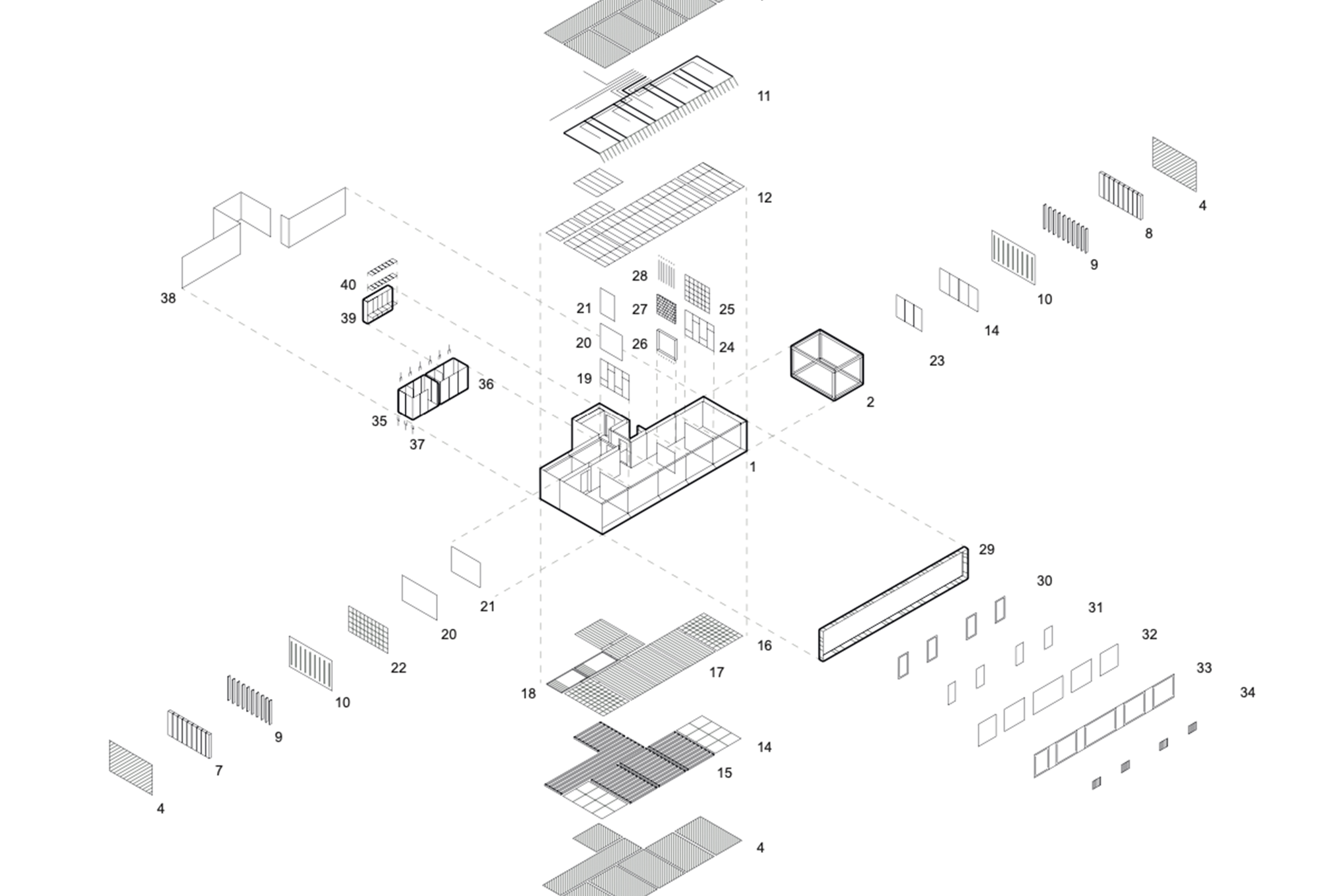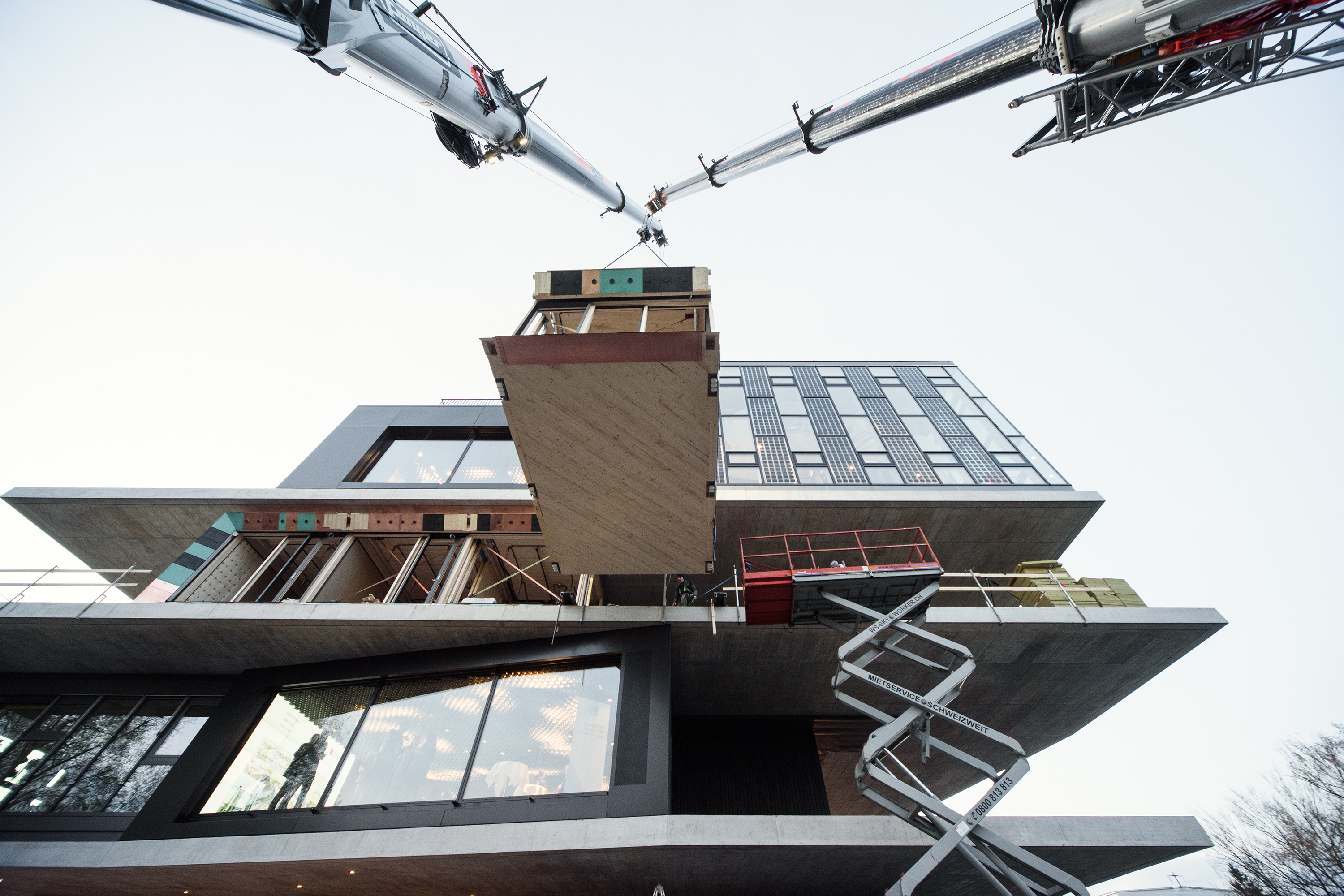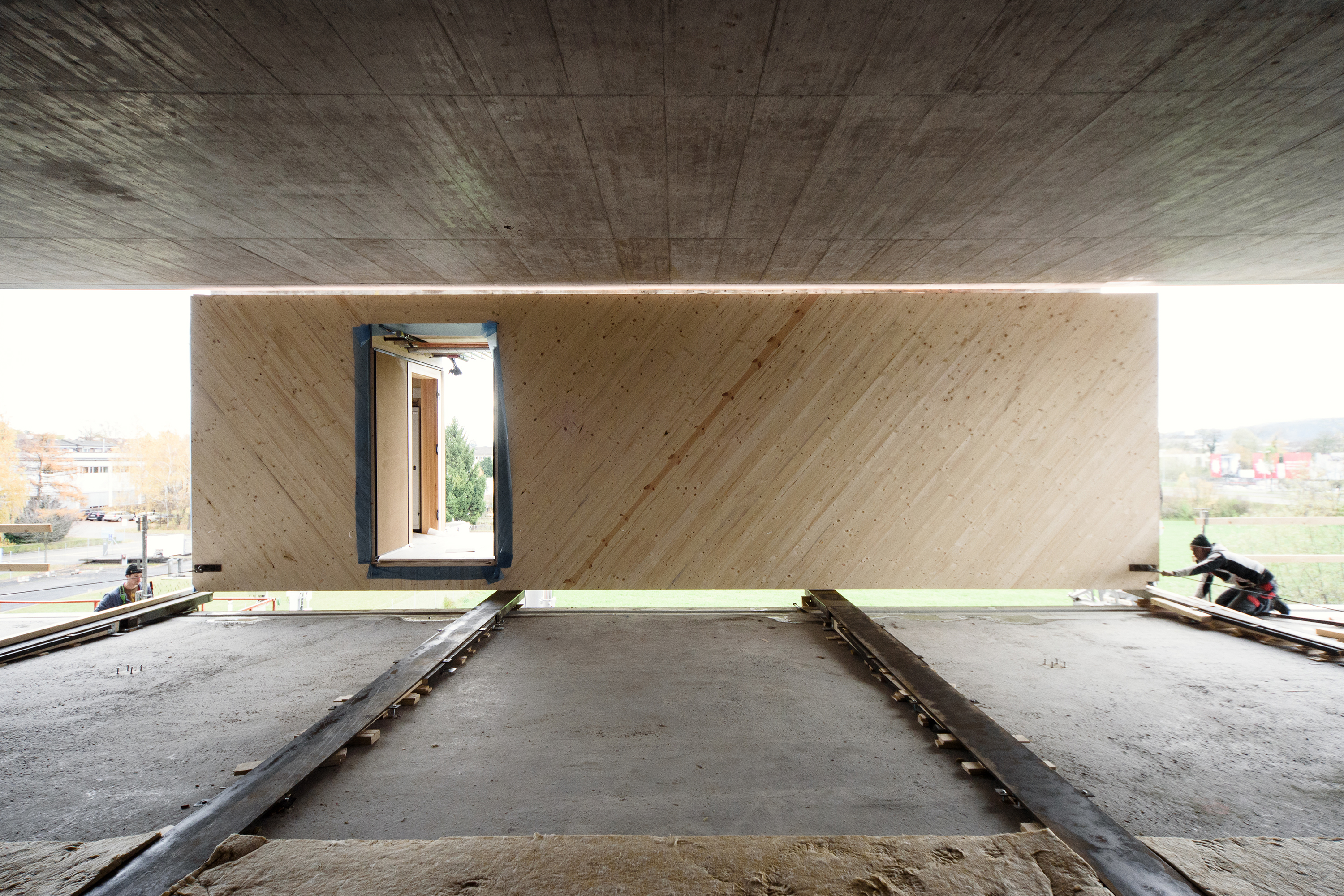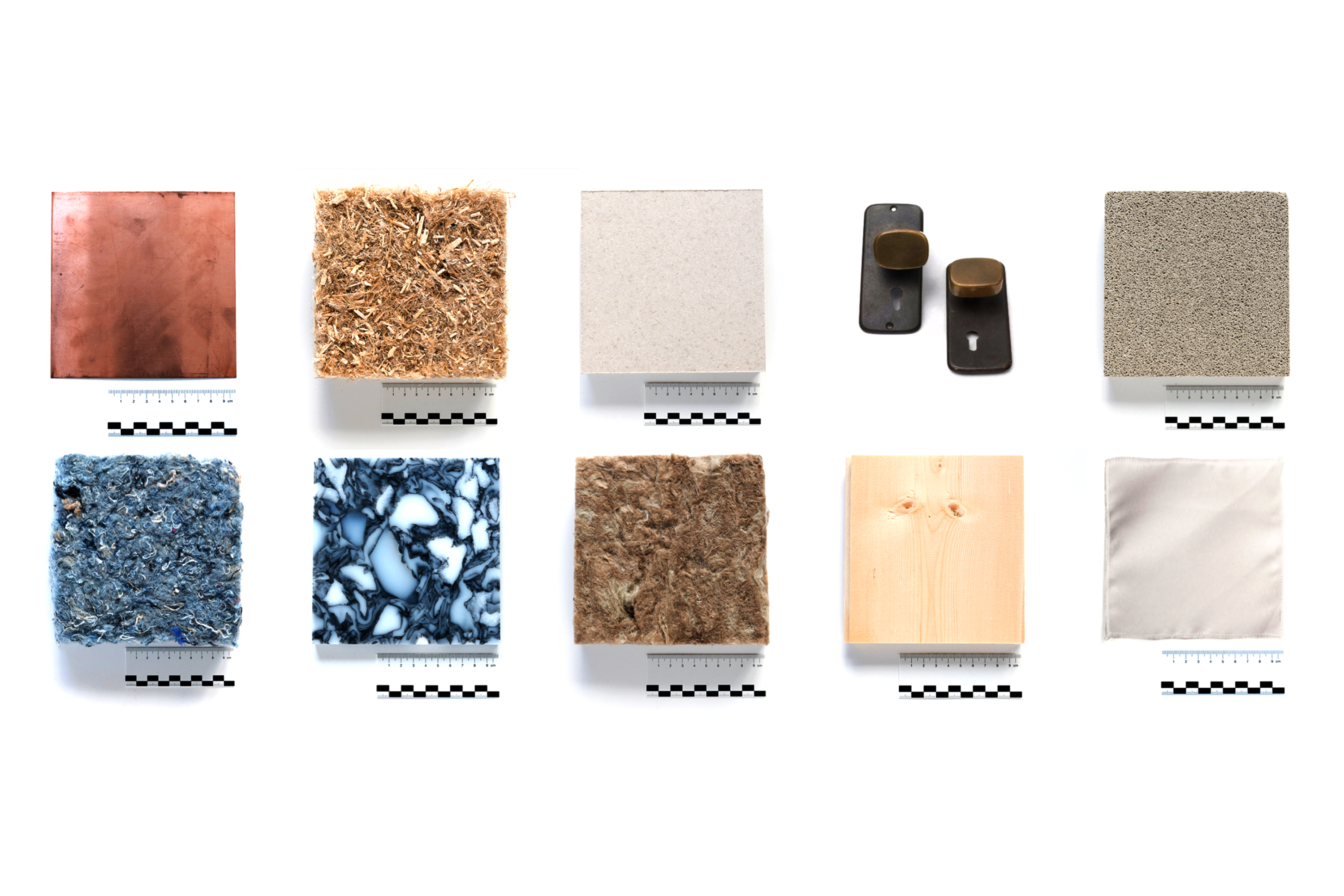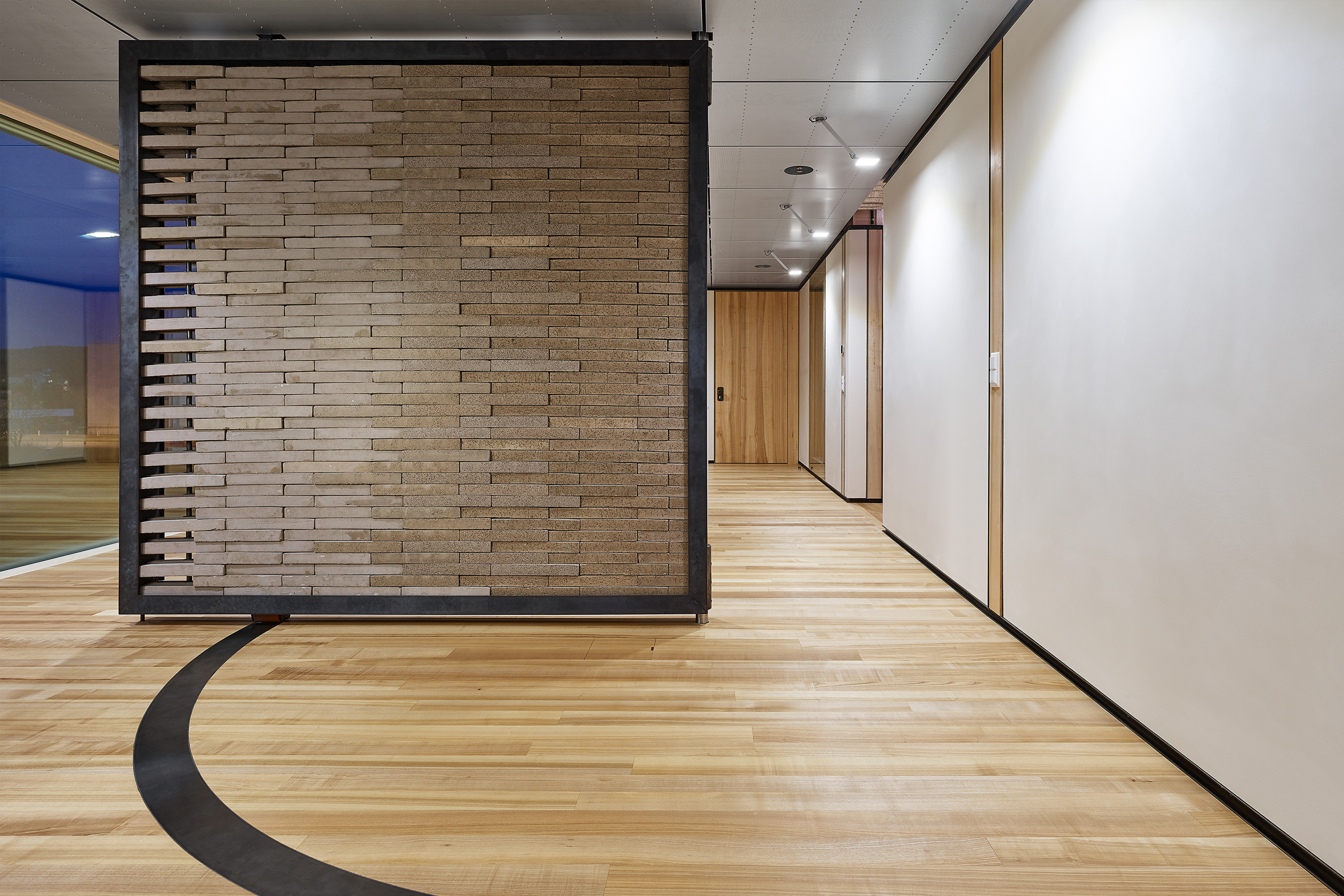Client
Empa Swiss Federal Laboratories for Materials Science and Technology, Dübendorf, Switzerland (Enrico F. Marchesi, Reto Fischer)
Concept, Design and Project Planning
Werner Sobek with Dirk E. Hebel and Felix Heisel, Stuttgart and Karlsruhe, Germany (Project Management, Werner Sobek Office: Bernd Köhler, Frank Heinlein)
Structural Planning and General Contractor
kaufmann zimmerei und tischlerei gmbh, Reuthe, Austria (Matthias Kaufmann)
HLSKE (Heating, Ventilation, Sanitation, Air-Conditioning & Electrical Systems) and MSR (Measuring & Control Technology)
Amstein-Walthert AG, Zürich, Switzerland (Project Management: Simon Büttgenbach)
Sprinklers
NBG Ingenieure AG, Bern, Switzerland (Bernhard Zmoos)
JOMOS Feuerschutz AG, Balsthal, Switzerland (Rudolf Jenni)
Fire Safety
Balzer Ingenieure AG, Chur, Switzerland (Dumeng Wehrli, Christoph Schärer)
Building Physics
Weber Energie und Bauphysik, Schaffhausen, Switzerland (Moritz Eggen)



